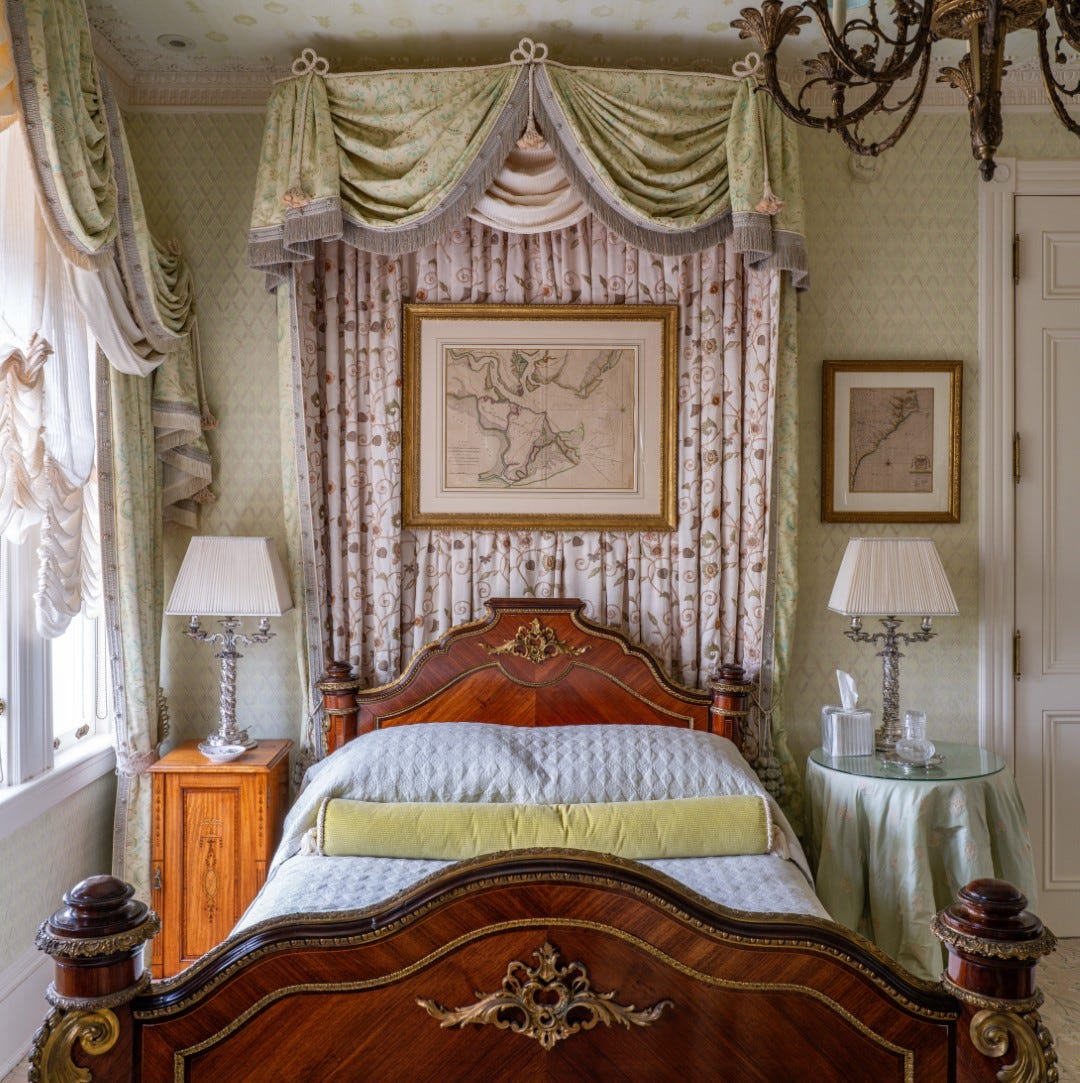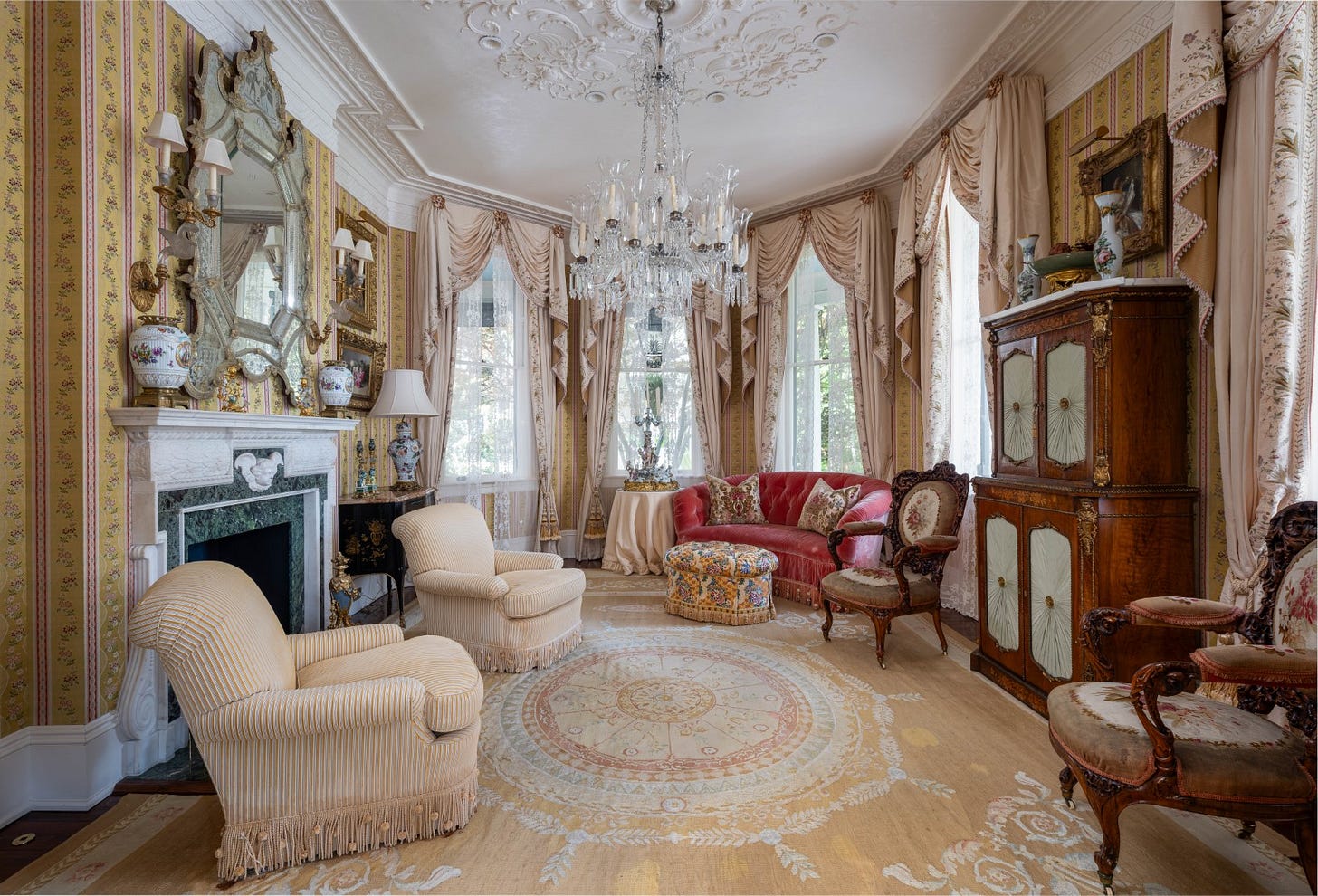A Carolina collector bids farewell to the elephants in her room (and much more).
On Sept. 13, the "South of Broad" collection of South Carolina investor and philanthropist Darla Moore goes up for auction
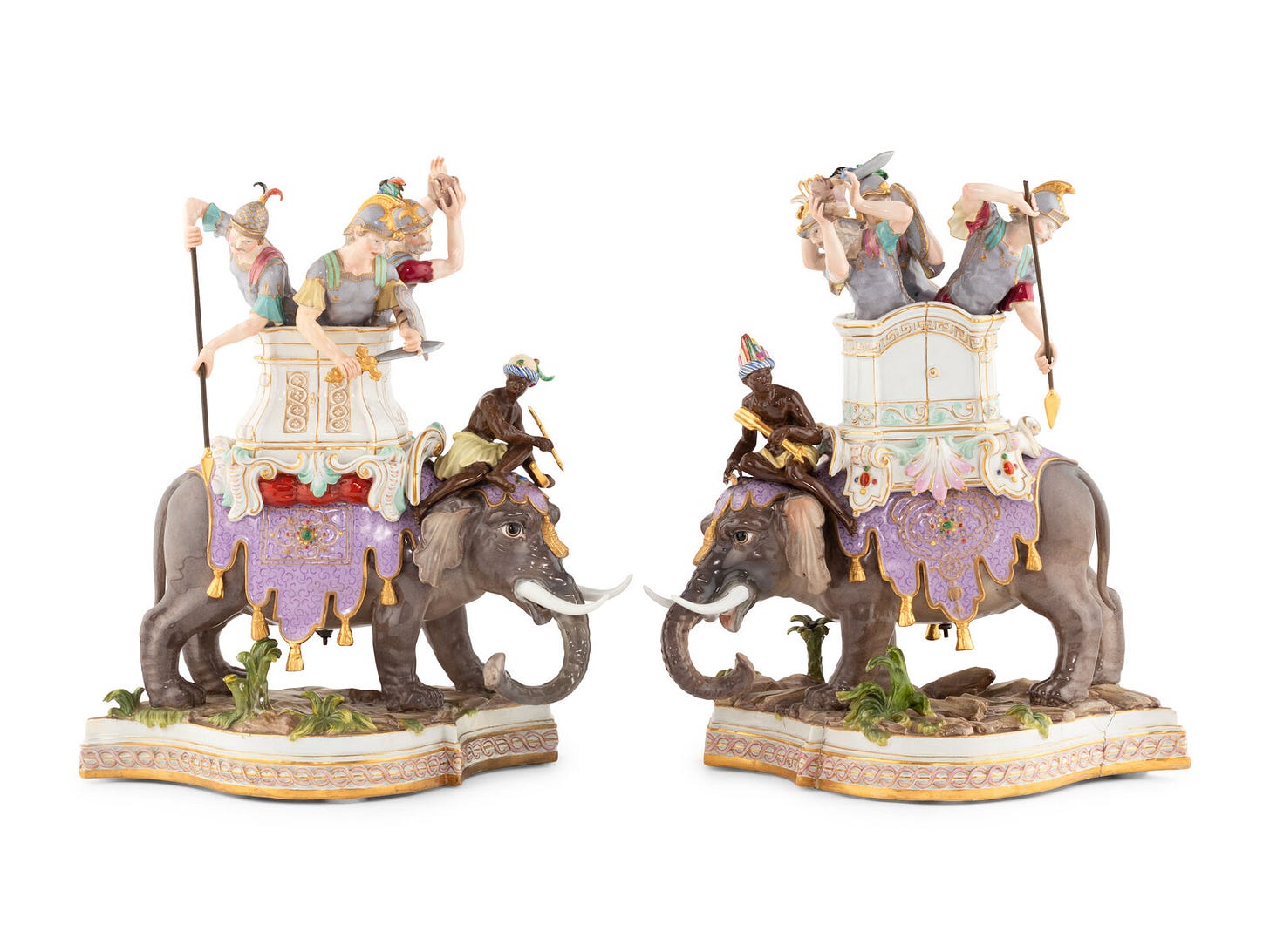
In my past decade covering the arts in Charleston, I’ve caught wind of some staggering fine art collections tucked behind those centuries-old, formidably secure wooden doors. These high-ticket treasures are rarely touted publicly, likely for reasons of security and liability.
That is, until such a collection finds its way to auction.
On Sept. 13, the auction house Freeman’s Hindman will present “South of Broad: The Charleston Home of Darla Moore by Tony Ingrao” at its Chicago saleroom. The collection encompasses centuries of items, which were exactingly curated to adorn 7 Ladson St.
It represents a collaboration between a collector and designer that spared neither expense nor rigor—and Charleston’s most significant single-owner sale.
From finance to philanthropy
I’ll be the first to admit my perennial fascination with Moore (as evidenced by my previous feature on her ArtFields initiative in Lake City). After all, as a small town, Southern woman who stormed the chest-beating, male-dominated gates of the finance world, she herself possesses a rare provenance.
Born and raised in Lake City, S.C., Moore went on to land on the cover of Fortune magazine, dubbed “The Toughest Babe in Business.” Her trajectory began by earning a degree in political science from the University of South Carolina and an M.B.A. from The George Washington University in Washington, D.C. It continued with a job in New York City at Chemical Bank, which ws followed by several thereafter in the private sector.
Beyond this business acumen and derring-do, it is Moore’s considered approach to philanthropy that has long piqued my interest.
Consider her m.o. when supporting Charleston Parks Conservancy. Rather than simply filling the organization’s coffers with funds to beautify the city’s parks, she was instrumental in the formulation of a volunteer-powered program that tapped into the deep reserves of local retirees in possession of free time and green thumbs, who now maintain the gardens of these public spaces.
Then there is ArtFields, Moore’s community-based arts initiative in Lake City that each year takes over the town, with locals displaying scores of works by Southern artists throughout shops, restaurants banks and public spaces. To revive a languishing tobacco town through the agency of art — and to succeed sufficiently to capture the imagination of national media and arts enthusiasts — is a stunning achievement.
At home in Charleston
So when Moore makes a move, I pay attention.
The 2002 purchase of the Charleston property at 7 Ladson St. was decidedly not as deliberated as many of Moore’s endeavors. Instead it happened spontaneously on a golf course.
“After a golf game over 20 years ago my late husband, Richard Rainwater, surprised me with the gift of a Charleston house,” Moore wrote in an email.
“He was golfing in Charleston with a young man who had a career opportunity in Atlanta, but wasn’t able to pursue the opportunity because he said he couldn’t sell his house in Charleston. Richard told him he’d buy his house and the young man went on to become a top executive in a major U.S. bank.”
That prime, if impromptu, real estate acquisition took the form of a high Victorian house, originally a “spec” house built in 1893. At the time of its construction, what money was available was concentrated on the the property’s curb appeal.
“There was cakebread molding on the front, scallops on the side and a few stained glass windows visible from the exterior. With the exception of an Arts andCrafts fireplace in the foyer the interior was simple with little embellishment,” she said, adding that an annex of sorts that was added to the back of the house in the 1940s, resulting in a rabbit warren of small rooms that made little sense.
Moore then enlisted world renowned designer Anthony Ingrao in what would become the first of several projects together. The two decided to turn the house into what “she” (as Moore called the house) would have dreamed of being at inception if resources had not been constrained. The result was a “perfectly correct” high Victorian home with furnishings and fine arts assembled from around the world, primarily from New York, London and Paris.
Taking a cue from Gilded Age grandeur in both its decorative bent and its investment depth, the property embraces an aesthetic that is a departure from much of the surrounding Charleston architecture.
Moore moves on
These days, Moore finds herself mainly on her farm in Lake City, her home in New York or traveling. Those pulls informed her recent decision to sell the Charleston property and find new homes for its fastidiously curated contents.
To do so, she tapped Shane David Hall of The Fine Art Group, an independent global team of advisors and art finance experts with clients across the Americas, Europe, the Middle East and Asia at every level of the art market.
As director of its high-profile client division, the Charleston-based Hall regularly works with celebrity entertainers, musicians and professional athletes when it comes to their fine arts collections.
The Hilton Head, S.C. native is no stranger to Charleston’s storied past. He earned his undergraduate degrees in historic preservation and art history from the College of Charleston, before earning masters of fine arts degree in American fine and decorative arts from Sotheby’s Institute of Art, while also getting his bona fides as a certified fine and decorative arts appraiser.
Hall’s true passion is American furniture dating to the eighteenth and nineteenth centuries, which made him uniquely suited for the task at hand.
“My passion complements Ms. Moore's passion for her collection,” he said, underscoring that he felt honored to work with the fine French porcelain, lighting, furniture and other decorative arts housed within this important South Carolina collection.
“Every collector, no matter their focus, always has a deep passion to buy the best example of an object possible, to protect and preserve that object, to truly act as a steward of history,” he said.
For Hall, 7 Ladson St. illustrates the collector’s desire to not only restore a late Victorian era home to the highest standards but also to fill that home with the best examples of English and Continental decorative arts as well as Orientalism paintings.
“Together the home and the collection tell the larger story of the American Gilded Age and the exuberance that informed design in the later part of the nineteenth century,” he said.
At auction
Now about that collection. According to Hall, there is truly something for everyone.
Consider, for instance, a pair of Meissen porcelain caparisoned elephant and soldier figural groups dating to circa 1880, which together are estimated to have a value of anywhere between fifteen and twenty-five thousand dollars.
Another Meissen piece, a nineteenth-century porcelain and gilt-bronze mounted figural candelabrum centerpiece, has an estimate of between twenty and forty thousand.
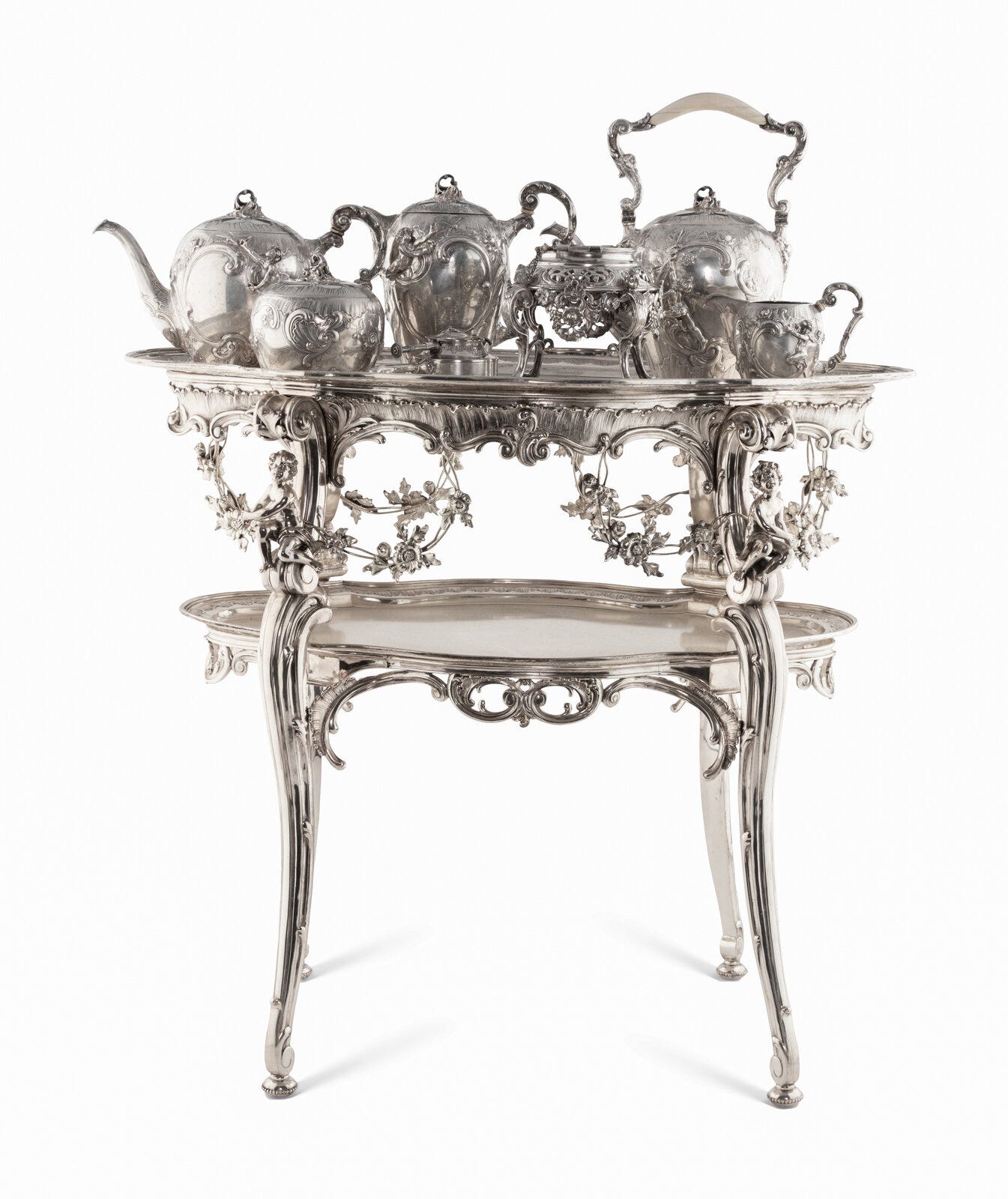
There is a rare German silver two-tier tea table, complete with a matching five-piece tea service and two trays, with an estimate of between twenty-five and fifty thousand dollars.
An oil painting by Julius LeBlanc Stewart, “Young Woman at Piano, 1878,” has an estimate of thirty to fifty thousand dollars.
You’ll also find an exquisite Meissen candelabrum, a French gilt-bronze Chinese Celadon glazed dish, antique Charleston maps and a jacquard upholstered, button-tufted ottoman, too. All once came together in lavish, exacting tableaux from one room to the next.
And, whether keen to collect or simply peruse, the auction is worth the exploration as part of a trend in the single-owner sale approach, which Hall points out has been on the rise in the art and auction market post 2020.
Single-owner sales, Hall explained, are unique to the auction industry and typically draw greater attention from other collectors and buyers. Always encompassing the collection of one collector, these auctions provide buyers with an opportunity to not only buy an object from a tastemaker but also the opportunity to explore the congruity found within a single collection, family or household.
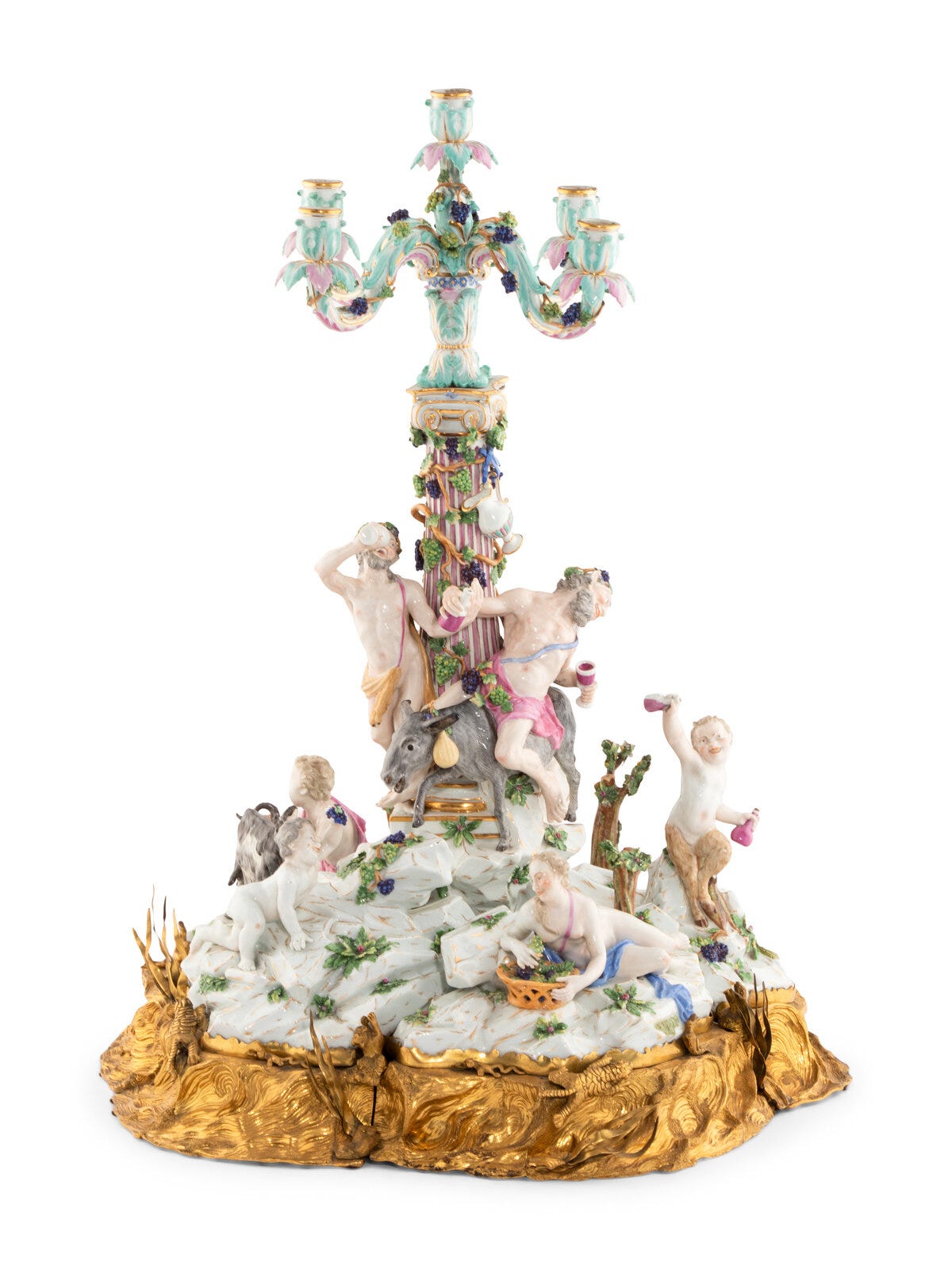
A new bar in Charleston
The Fine Art Group opened an outpost in Charleston in 2019 after starting to work with clients there in 2017. And they are not alone. The national auction house Doyle has now settled in a smartly refurbished storefront on King Street, where it regularly showcases items en route to New York auctions.
Hall points out that the art market is the last unregulated sector of the financial industry. Without holding an inventory itself, his firm aims to educate collectors to engage with that market.
With the “South of Broad” auction, a recent trend of the art market has arrived in Charleston.
“While not a new concept, the single-owner sale had not yet made its way to Charleston; however, now we can say that it has,” he said. A specialty of The Fine Art Group, the auction is a first for Charleston and Charleston collections.
With his background in Charleston historic preservation, Hall knows well the long history of collecting in the city.
“Charleston and Charlestonians have always held a deep appreciation for collecting. Collations can be drawn to our forebears and the international travel they embarked on during the eighteenth and nineteenth centuries as well as the fine art, books and objects which they purchased while on grand tour,” Hall noted.
He pointed out that such objects still exist and are often found within private family collections as well as in local institutions such as the Gibbes Museum of Art and Historic Charleston Foundation's collection.
“With Charleston taking center stage as one of the top cities in the nation and certainly the world, is not shocking the newcomers would look to our city to capitalize on the collections and collectors that exist here,” he said.
At the same time, Hall said, new residents have raised the bar, diversifying local collections by bringing collections of contemporary photography, blue chips works of art and similar assets that may not have existed in Charleston prior to 2020.
“We have always been and always will be a city that prizes culture,” he said. “With our robust stock of historic domestic architecture and our continued increasing profile as being as world class shelter focused city, I believe our legacy of collecting and our legacy of being house proud will only continue to improve.”
As for Moore, she’s moving on. After raising yet another cultural bar in the state, she is, true to form, leaving others to now rise to it.
“It was a labor of love which we enjoyed for many years,” she said.
I, for one, will be on the lookout for the ways in which Charleston continues to evolve in the art market — as well as for Darla Moore’s next inspired, and deeply considered, cultural pursuit.






